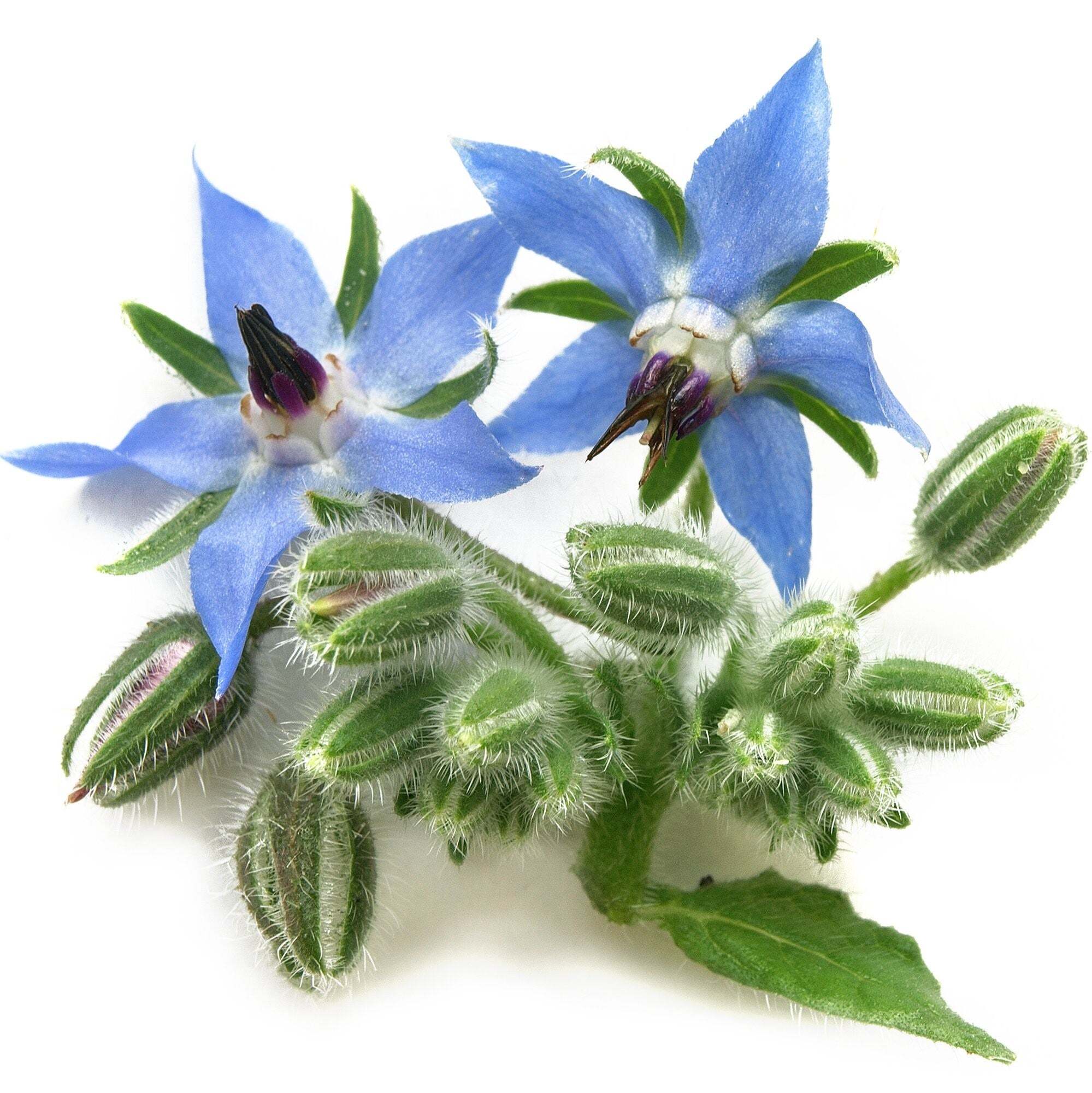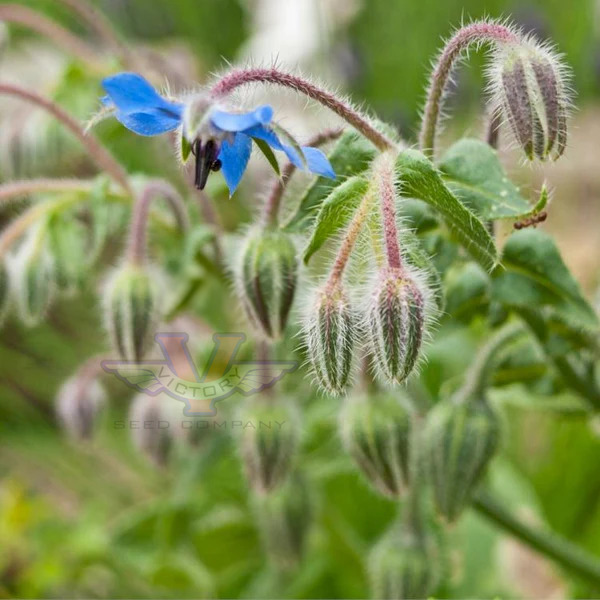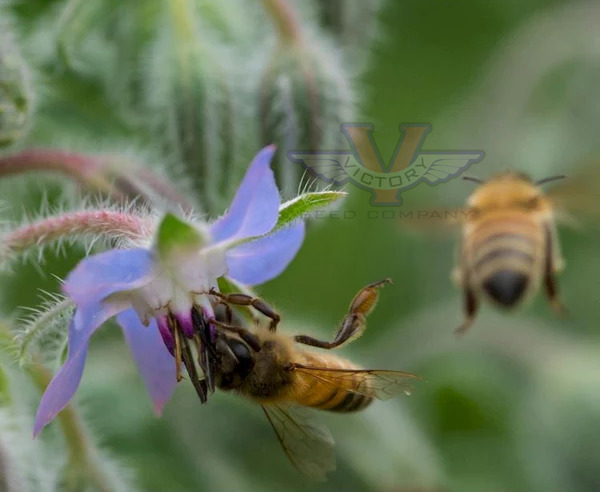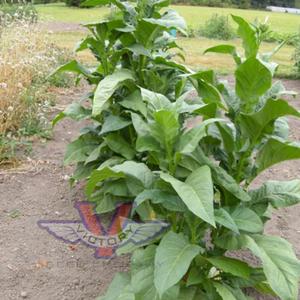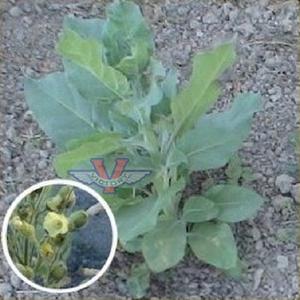


Borage
Price: $3.04
SKU: 4000061The flowers are edible and make an attractive addition to summertime drinks, either floated on the surface or frozen into ice cubes. In times passed, the flowers were preserved and candied for off-season use. Borage is an annual that will self-sow and return year after year in most areas. Each packet contains 1 gram, which is approximately 50 seeds.
Although it has been used as a potherb, the plant material can contain small levels (2 to 10ppm) of pyrrolizidine alkaloids, so modern uses are generally restricted to external applications in the form of poultices or extracts.
Borage is best grown from seed, as it doesn't transplant well. Sow borage seeds directly in the garden or in pots, planting them 1/4 inch deep and spacing them about 12 inches apart. You can sow seeds in early spring, once the danger of frost has passed.
Germination: Borage seeds typically germinate within 5 to 15 days. Keep the soil consistently moist but not soggy during the germination period.
Watering: Borage is relatively drought-tolerant, but it performs best when watered regularly. Keep the soil evenly moist, especially during hot and dry periods. Avoid overwatering to prevent root rot.
- "A Modern Herbal," Mrs. M. Grieve, 1931, p. 119-120.
- "Handbook of phytochemical constituents of GRAS herbs and other economic plants," James A. Duke, CRC Press, Boca Raton, Florida, 1992.
- "Dr. Duke's Phytochemical and Ethnobotanical Databases," U.S. Department of Agriculture, Agricultural Research Service, 1992-2016.
Customer Reviews:
By Kim (South Florida) on May 4, 2024
I originally purchased these seeds for companion planting with my strawberries because I read that it is a great bee attractor. There were bumble bees all over this plant. I was so excited. I'm going to plant a whole lot more borage. I really only planted one or two seeds and forgot about it and it sprouted just fine. Keep in mind that it grows enormous and then dies off as it is an annual herb. Seed collecting is a pita though. Literally out there twice a day or more to check the spent buds to look for seeds and missed them almost every time LOL. I even put a tarp under the plant, guess I will have volunteers forever. No complaints here. Love this plant and one or two seeds sprouted perfectly, so I call that a good germination rate.
By Laura Lyons on March 5, 2020
I've planted these in my vegetable garden for two years now, and although I don't know that I've noticed any significant companion planting benefits, they sure are pretty! The flowers don't have much of a flavor, but are very decorative on a fruit or vegetable plate. They do tend to get leggy and flop over, as one reviewer said, but I have not had trouble with them in heat, perhaps because they've always had at least afternoon shade. They also seem rather drought resistant. I did try the suggestion of putting them in ice cubes, which was fun - although next time I'll only fill the tray half full, freeze the flowers, and then fill it the rest of the way. Otherwise the flower just floats on the surface of the cube and soon breaks free when you put it in a beverage, which is a little weird. Overall, a great plant!
By Crissa Becker on March 2, 2019
These plants germinated and grew great. The leaves were nice, and the flowers were beautiful. But when it was 90F degrees in late June, the plants wilted and died, and only a few of them were able to flower. I recommend this variety for cool season areas; not Dallas, Texas!
By Jesse Pagan on February 15, 2019
I bought this because I'd read in the book Carrots Love Tomatoes that it's good to companion plant with strawberries and it's a favorite of honeybees and other pollinators. It was very easy to grow and the pollinators did love it. We enjoyed a few a the cucumber flavored leaves. It is a beautiful plant - very ethereal looking in the early morning, sparkling with all the dew suspended on its tiny hairs. A few visitors asked about this plant and ended up taking seeds home with them.
By Alison Dvorak on December 31, 2016
I grew this as a companion to tomatoes and beans in 2015. It came back in 2016, good for my onions. Young leaves were good in salads. Older leaves smell bad and have an off-putting prickly texture, but were good when cooked. It was attractive to rabbits and bugs (worked well as a trap crop), and needed to be cut back to keep it from getting too big and flopping over. The flowers are very pretty.
By rosemary kelley on January 3, 2014
I grew this in my strawberry garden in 2013 as a companion plant. I planted the seeds and all 3 plants grew. They really are a pretty plant when they bloom. I harvested the blooms to eat in salads and to feed the chickens. I trimmed the plant a couple times to keep it in check and it did just fine. I will plant this in other areas to help attract bees etc. It is a super easy herb to grow and I am waiting to see if it comes back on its own this year.
